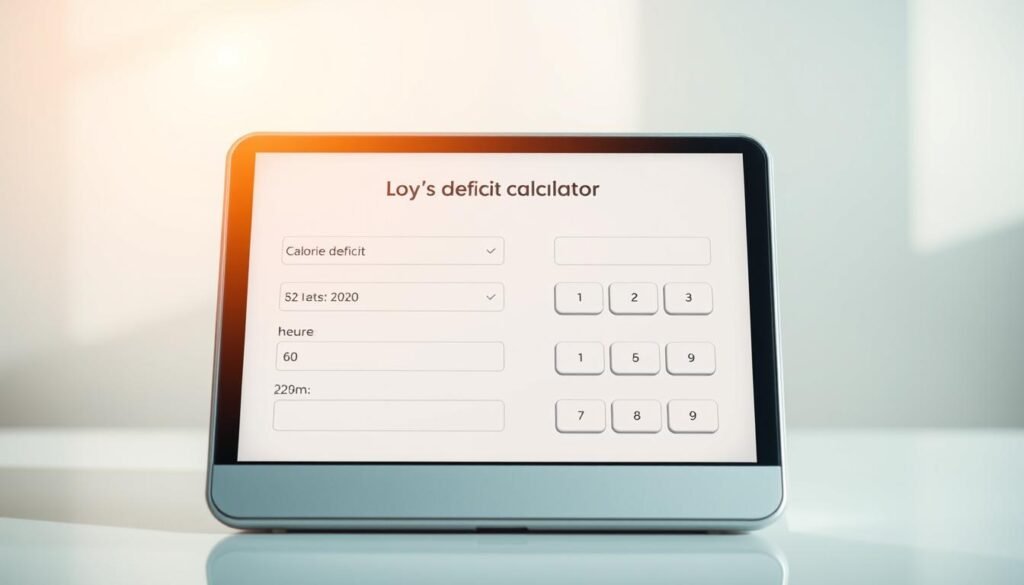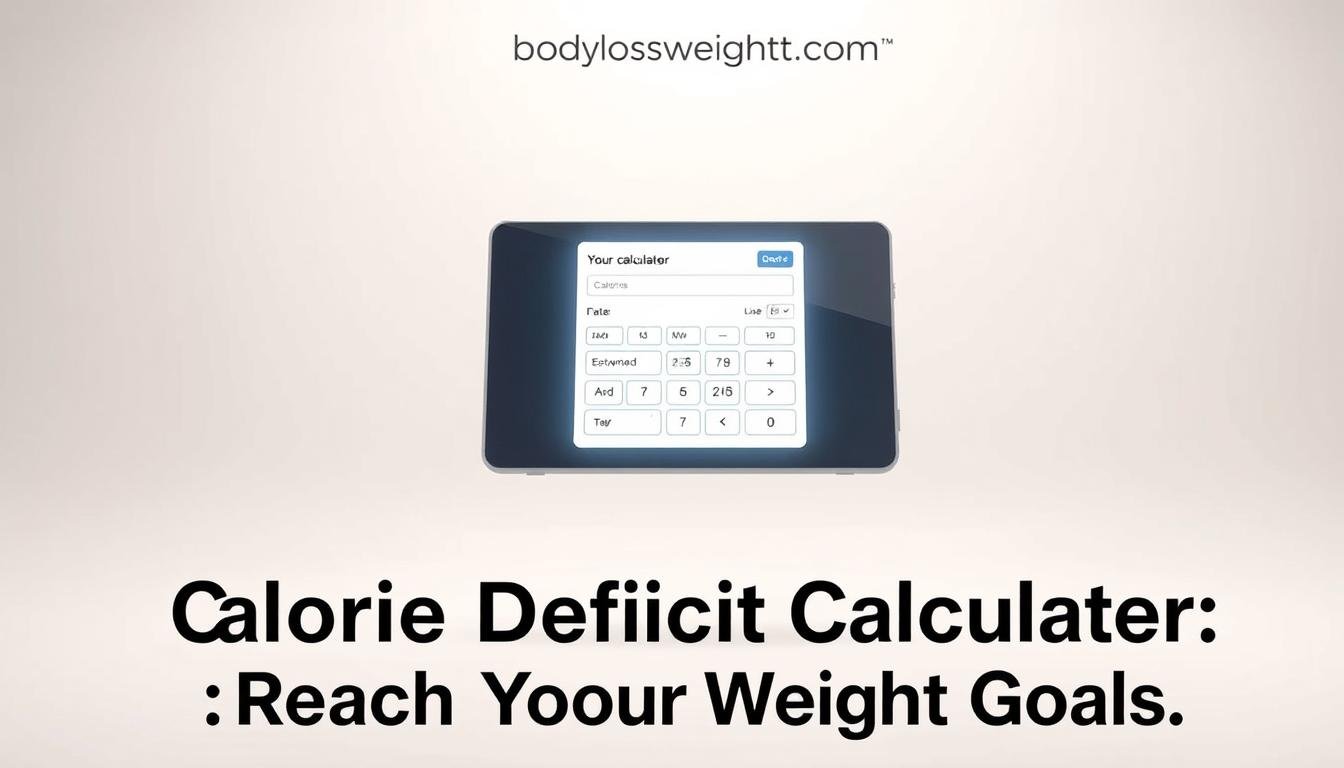Imagine standing in front of the mirror, feeling a mix of determination and uncertainty. You’ve decided it’s time to take charge of your health, but where do you begin? Many of us have been there, grappling with the intricacies of weight loss.
A calorie deficit calculator can be your guiding light in this journey. This simple yet powerful tool helps you understand your unique caloric needs. It makes it easier for you to create a calorie deficit tailored just for you.
No matter if your goal is to shed pounds or gain muscle, using a weight loss calculator can clarify how to achieve your desired results effectively. With its ability to account for personal factors such as age and activity level, you can confidently embark on your path to a healthier you.
Understanding how to calculate calorie deficit may seem daunting at first, but with the right approach, it becomes a manageable part of your daily routine. Let’s explore how this tool can simplify your journey and set you on the right track towards achieving your weight goals.
Key Takeaways
- A calorie deficit calculator helps personalize your weight loss journey.
- It considers various factors like age, gender, height, and activity level.
- This tool is instrumental in setting realistic weight loss and gain goals.
- Understanding your caloric needs is crucial for effective weight management.
- Using a weight loss calculator can provide clarity on your daily caloric requirements.
- Creating a calorie deficit is essential for achieving weight loss success.
Understanding Calorie Deficit
A calorie deficit happens when you eat fewer calories than your body needs. This is key for losing weight. It makes your body use fat for energy. Knowing about calorie deficits helps you lose weight well.
What is a Calorie Deficit?
A calorie deficit is when you eat less than you burn. This leads to losing weight. When you eat less than your body uses, it uses fat for energy. Learning about calorie deficits helps you eat better and reach fitness goals.
The Importance of Creating a Calorie Deficit
Creating a calorie deficit is vital for losing weight. It helps you lose fat and stay healthy. Here’s why it’s important:
- Promotes fat loss while preserving muscle mass.
- Encourages mindful eating and better nutritional choices.
- Supports metabolic health by optimizing body composition.
- Instills a disciplined approach to food intake and activity levels.
Being aware of calorie intake and creating a deficit helps manage weight long-term. It improves both physical and mental health. It leads to lasting lifestyle changes.
How to Use a Calorie Deficit Calculator
Using a calorie deficit calculator helps you lose weight. It’s easy to use and works for everyone. Just start by putting in your personal info like gender, age, height, and weight.
Also, tell it how active you are. This affects how many calories you burn each day.
Inputting Your Data
First, find a good calorie deficit calculator online. Then, fill in your details. For example:
- Gender: Male or Female
- Age: Your age in years
- Height: Your height in inches or centimeters
- Current Weight: Your weight in pounds or kilograms
- Goal Weight: The weight you want to reach
- Activity Level: Pick from sedentary, lightly active, moderately active, or very active
This info helps figure out how many calories you need each day.
Interpreting Your Results
After you input your data, the calculator shows how many calories you need. This is key for setting weight goals. Knowing your calorie needs helps you adjust your diet and exercise.
The calculator’s insights help you make a diet plan that fits your weight loss goals.
Your Total Daily Energy Expenditure (TDEE)
Your Total Daily Energy Expenditure, or TDEE, shows how many calories your body uses each day. It includes your Basal Metabolic Rate (BMR) and calories from daily activities. Knowing your TDEE helps you manage your weight by setting the right calorie goals.
What is TDEE?
TDEE measures all the energy your body uses in 24 hours. It helps you plan your diet for your weight goals. To lose weight, you need to eat fewer calories than your TDEE. This lets you track your progress and use a daily calorie intake calculator.
Factors Influencing Your TDEE
Many things affect your total daily energy expenditure. These include:
- Age: Metabolic rates go down with age.
- Gender: Men usually burn more calories than women.
- Weight: More body mass means more energy needed.
- Height: Taller people often need more energy.
- Activity Level: Active people burn extra calories.
Knowing these factors helps you guess your TDEE. This is key for using a daily calorie intake calculator. Using this knowledge in your weight management plan helps you eat the right amount of calories for your body.
Daily Calorie Intake Calculator Explained
Knowing how many calories you need each day is key for managing your weight. A calorie needs calculator can show you how many calories to eat. This depends on if you want to lose, keep, or gain weight. We’ll explain how to figure out your daily needs and adjust them for your activity level.
Calculating Your Daily Needs
The first step is to find your Basal Metabolic Rate (BMR). This is how many calories your body needs when you’re not moving. Your BMR changes based on your age, gender, height, and weight.
Then, you need to find your Total Daily Energy Expenditure (TDEE). This includes how active you are. It shows how many calories your body uses every day.
Adjusting for Activity Level
After finding your daily calorie needs, you need to adjust them for how active you are. If you’re not very active, you might need fewer calories. Use the calorie needs calculator to get advice on changing your diet.
It’s important to check these calculations often. This is because your lifestyle can change, and so do your calorie needs.
Calorie Deficit for Effective Weight Loss
Creating a proper calorie deficit is key for losing weight. You might ask, how much of a deficit is needed for good results? A daily deficit of about 500 calories can help you lose one pound a week. This method is based on the old 3500-calorie rule, which might not fit everyone’s needs.
Looking for a calorie deficit that works for you can lead to lasting results.
How Much of a Deficit is Required?
The right calorie deficit varies for each person. Things like age, gender, weight, and how active you are play a big role. It’s important to adjust your deficit based on these factors, not just by following general rules.
Getting a deficit that fits you can help you lose weight safely and effectively.
Myths Around the 3500-Calorie Rule
Many people follow the 3500-calorie rule, thinking it guarantees weight loss. But this simple idea can lead to disappointment and unhealthy eating habits. Real weight loss doesn’t always follow this rule.
When trying to lose weight, focus on eating well and exercising regularly. Don’t just count calories.
Knowing these facts can help you on your weight loss journey. A realistic calorie deficit can improve your relationship with food and your body.
The Best Calorie Deficit Calculator: Key Features
Finding the right calorie deficit calculator is key for weight management. A good online tool lets you track your progress and tweak plans as needed. The best tools have features that make them easy to use and effective.
Accuracy and Reliability
Accuracy is vital in any calorie deficit calculator. These tools use math models from nutrition and fitness pros. They consider your age, gender, weight, height, and how active you are.
They give you exact calorie counts. This helps you know how much weight you might lose. It’s a big help in your weight loss journey.
User-Friendly Design
The best calorie deficit calculator is easy to use. It should have a simple design for quick input and easy navigation. Users like tools that are easy to understand and use.
Clear instructions and visual results make it easier to see how calorie deficits work. This is great for beginners who want to start losing weight.

Creating a Sustainable Weight Loss Plan
Starting a weight loss plan needs careful thought and realistic goals. Setting goals that match your calorie needs helps you stay motivated. This makes losing weight feel like a journey you can take.
Setting Realistic Goals
When setting your weight loss goals, aim for something that’s both hard and doable. Think about these things:
- Set a specific weight loss goal, like losing a few pounds each month.
- Track your progress by measuring your body or counting calories.
- Have smaller goals that lead up to your big goal. This helps you feel accomplished.
Incorporating Exercise and Nutrition
A good weight loss plan balances exercise and healthy eating. Working out helps you burn more calories and gets you fit. Eating mindfully helps you eat better. Here are some tips:
- Eat foods that are full of nutrients and keep you full for workouts.
- Try different exercises to keep things interesting and fun.
- Drink plenty of water and get enough sleep to help your efforts.
Monitoring Your Progress
Watching your weight is key to managing it. Seeing how your weight changes helps you know if your plans are working. There are many tools and ways to help you stay on track and reach your goals.
Tracking Weight Changes
Writing down your weight often gives you clues about your progress. You might use a digital scale and an app to track it easily. This way, you can see how far you’ve come.
Try to weigh yourself at the same time every day. Seeing ups and downs helps keep you motivated.
Adjusting Your Plan as Needed
If your progress slows down, it’s time to change your plan. You might need to eat fewer calories or move more. Keeping a calorie deficit is important for losing weight.
For advice on how many calories to cut, use a calorie deficit calculator. Being flexible with your plan helps a lot.

Conclusion
Thinking about your weight loss journey? A calorie deficit calculator is key. It shows you how many calories you need each day. This helps you make a plan that works just for you.
Using a calorie deficit calculator means you need to eat right and exercise too. It’s not just about eating less. It’s about eating well and staying active. This way, you can reach your goals without losing your health.
With the right tools and knowledge, you’re ready to live healthier. Start making small, steady changes. Your weight loss journey begins with smart choices, and you’re ready to make them.
FAQ
What is a calorie deficit calculator?
A calorie deficit calculator helps you figure out how many calories to eat. It takes into account your age, gender, height, weight, and how active you are.
How do I calculate my calorie deficit?
First, find your Total Daily Energy Expenditure (TDEE) with a daily calorie intake calculator. Then, subtract how many calories you want to eat from your TDEE to find your deficit.
Why is understanding TDEE important for weight management?
Knowing your TDEE is key. It tells you how many calories you need to keep your weight the same. It helps you plan a calorie deficit for losing or gaining weight.
How can I create a calorie deficit?
Eat fewer calories than your TDEE to create a deficit. You can use an online calorie deficit calculator or adjust your diet and exercise to burn more calories.
What is the misconception surrounding the 3500-calorie rule?
The 3500-calorie rule is outdated. It says losing 3500 calories equals one pound of weight loss. But, everyone’s body is different, making weight loss unique.
How do I adjust my calorie intake based on my activity level?
Choose your activity level (sedentary, moderately active, highly active) when using a daily calorie intake calculator. This helps get a more accurate calorie count for your lifestyle.
What features should I look for in the best calorie deficit calculator?
Look for a calculator that is easy to use and gives accurate results. It should also let you adjust for different activity levels and weight loss goals.
How often should I monitor my weight loss progress?
Check your weight weekly to stay on track. This lets you see if you’re meeting your goals. You can then adjust your diet or exercise plan as needed.
What are effective methods to track my calorie intake and weight changes?
Use apps or websites for calorie tracking. Log your meals and workouts. A food diary or weight loss app can help you stay on track and adjust your calories as needed.
